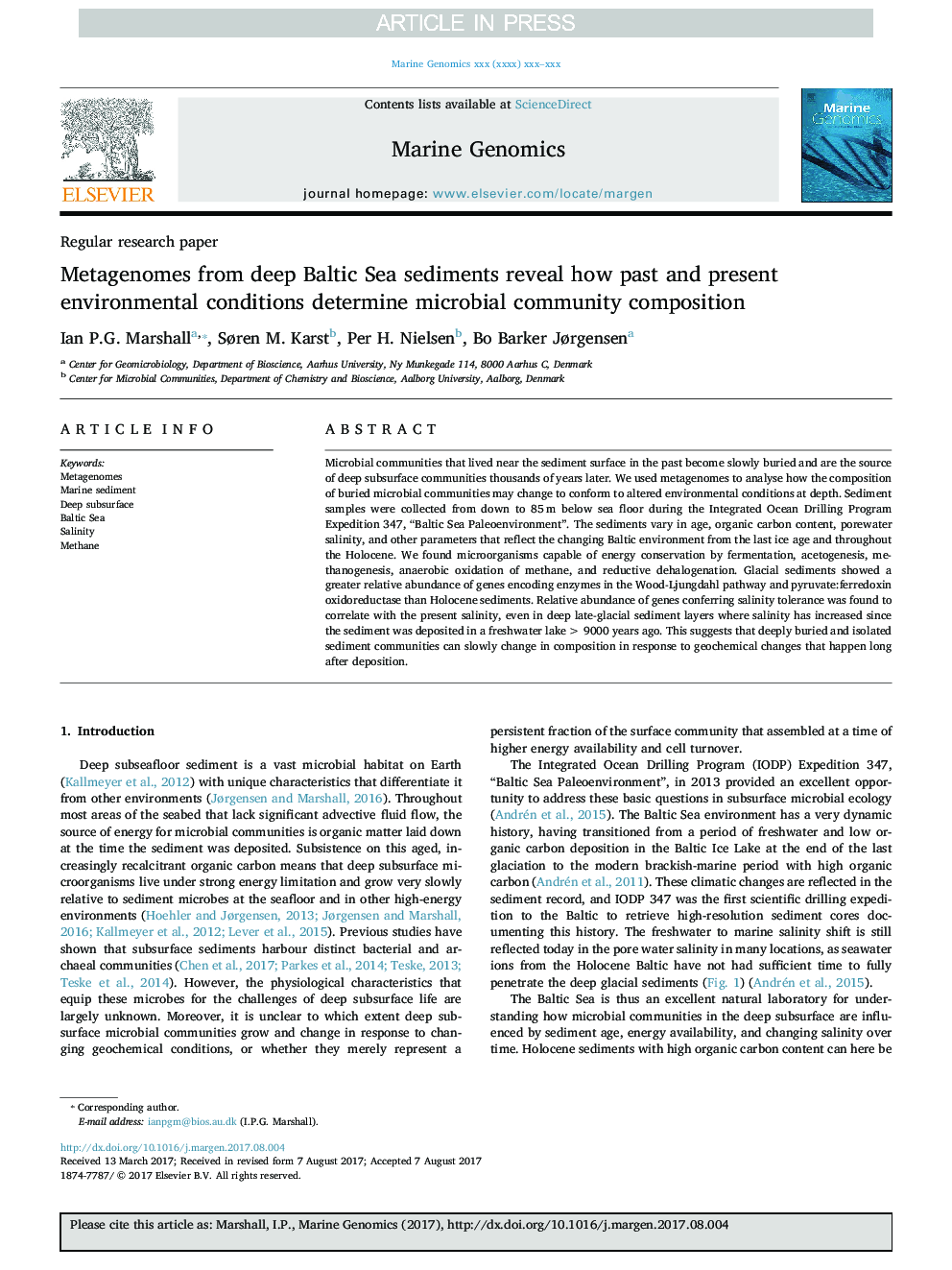| Article ID | Journal | Published Year | Pages | File Type |
|---|---|---|---|---|
| 8387980 | Marine Genomics | 2018 | 11 Pages |
Abstract
Microbial communities that lived near the sediment surface in the past become slowly buried and are the source of deep subsurface communities thousands of years later. We used metagenomes to analyse how the composition of buried microbial communities may change to conform to altered environmental conditions at depth. Sediment samples were collected from down to 85Â m below sea floor during the Integrated Ocean Drilling Program Expedition 347, “Baltic Sea Paleoenvironment”. The sediments vary in age, organic carbon content, porewater salinity, and other parameters that reflect the changing Baltic environment from the last ice age and throughout the Holocene. We found microorganisms capable of energy conservation by fermentation, acetogenesis, methanogenesis, anaerobic oxidation of methane, and reductive dehalogenation. Glacial sediments showed a greater relative abundance of genes encoding enzymes in the Wood-Ljungdahl pathway and pyruvate:ferredoxin oxidoreductase than Holocene sediments. Relative abundance of genes conferring salinity tolerance was found to correlate with the present salinity, even in deep late-glacial sediment layers where salinity has increased since the sediment was deposited in a freshwater lake >Â 9000Â years ago. This suggests that deeply buried and isolated sediment communities can slowly change in composition in response to geochemical changes that happen long after deposition.
Related Topics
Physical Sciences and Engineering
Earth and Planetary Sciences
Earth and Planetary Sciences (General)
Authors
Ian P.G. Marshall, Søren M. Karst, Per H. Nielsen, Bo Barker Jørgensen,
